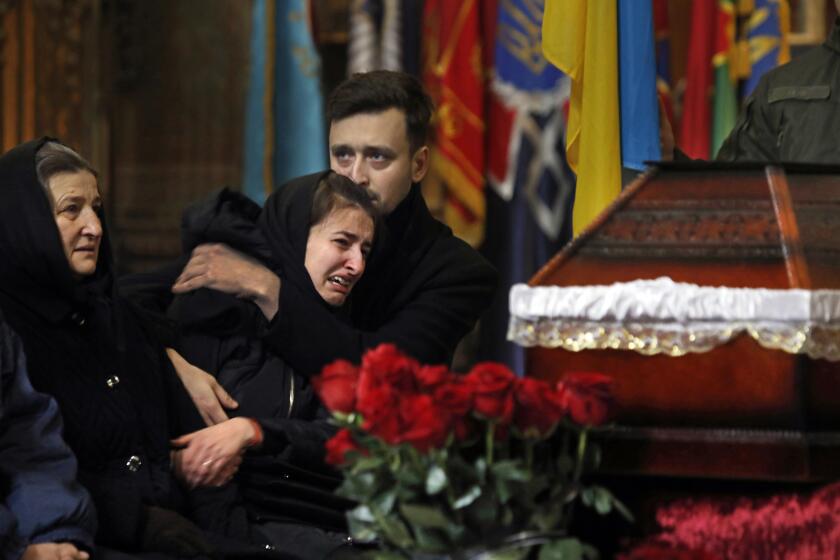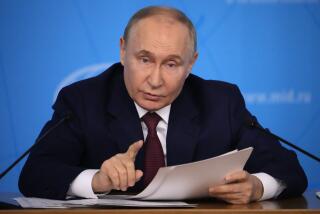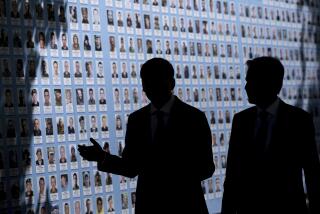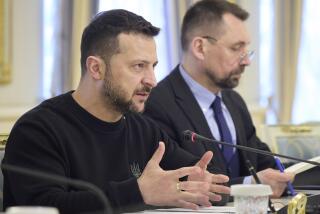The weaponization of winter: Ukraine aims to stop Russia from regrouping as temperatures drop
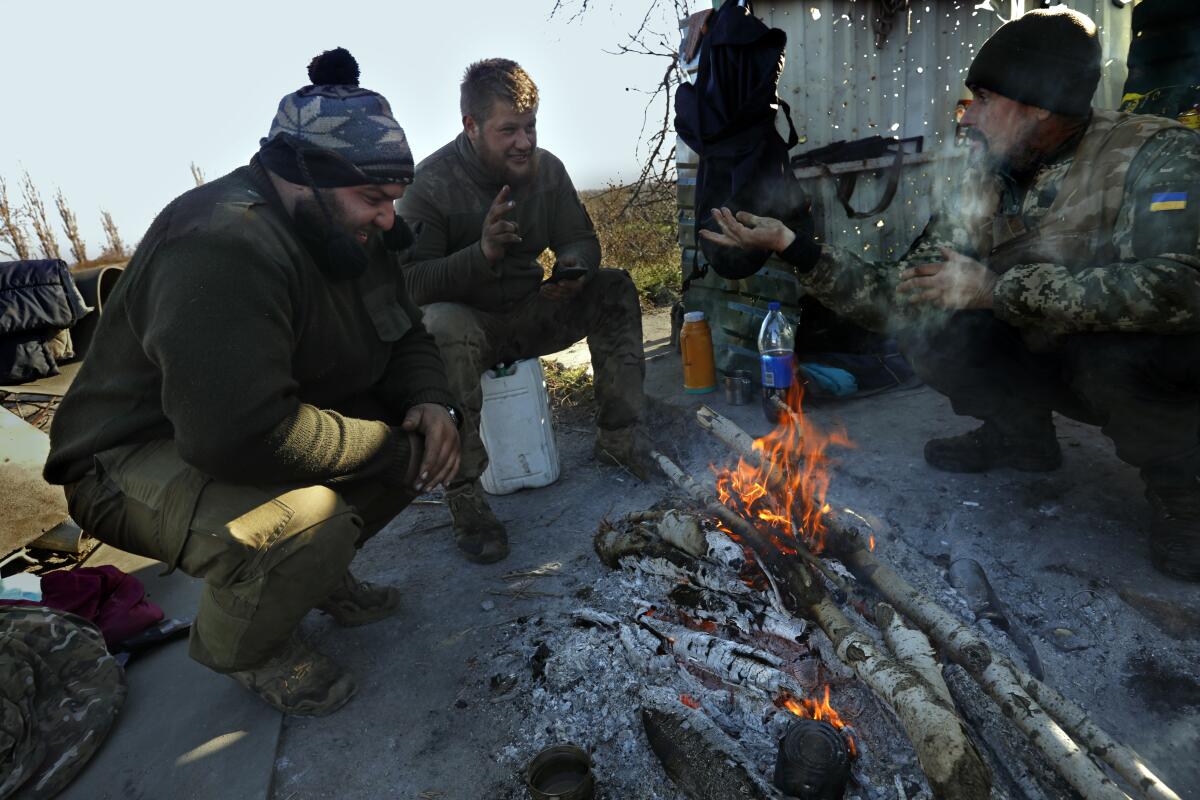
- Share via
MYKOLAIV, Ukraine — On the desolate battlefronts of southern and eastern Ukraine, the clinging, clay-like mud of late autumn is beginning to congeal into iciness. As snow flurries and freezing temperatures set in, the last thing this country’s leaders want is for the war’s front lines to harden in place as well.
Any wintertime letup in combat operations, Ukrainian officials believe, would give Russia’s beleaguered army a chance to rest, regroup and try to seize momentum that has eluded Moscow’s forces throughout more than nine months of fighting. So even during the coming cold months, Ukraine is determined to keep up military pressure on a numerically superior but faltering foe.
But Russia is employing a pressure tactic of its own: deliberate destruction of Ukraine’s energy infrastructure, with civilian morale as an indirect target. Waves of bombardment that began in earnest in early October, aimed at targets such as thermal plants and electrical substations, have brought the national power grid to the brink of collapse just as temperatures are plummeting.
Ukrainian officials and Western allies have taken to calling it the weaponization of winter.
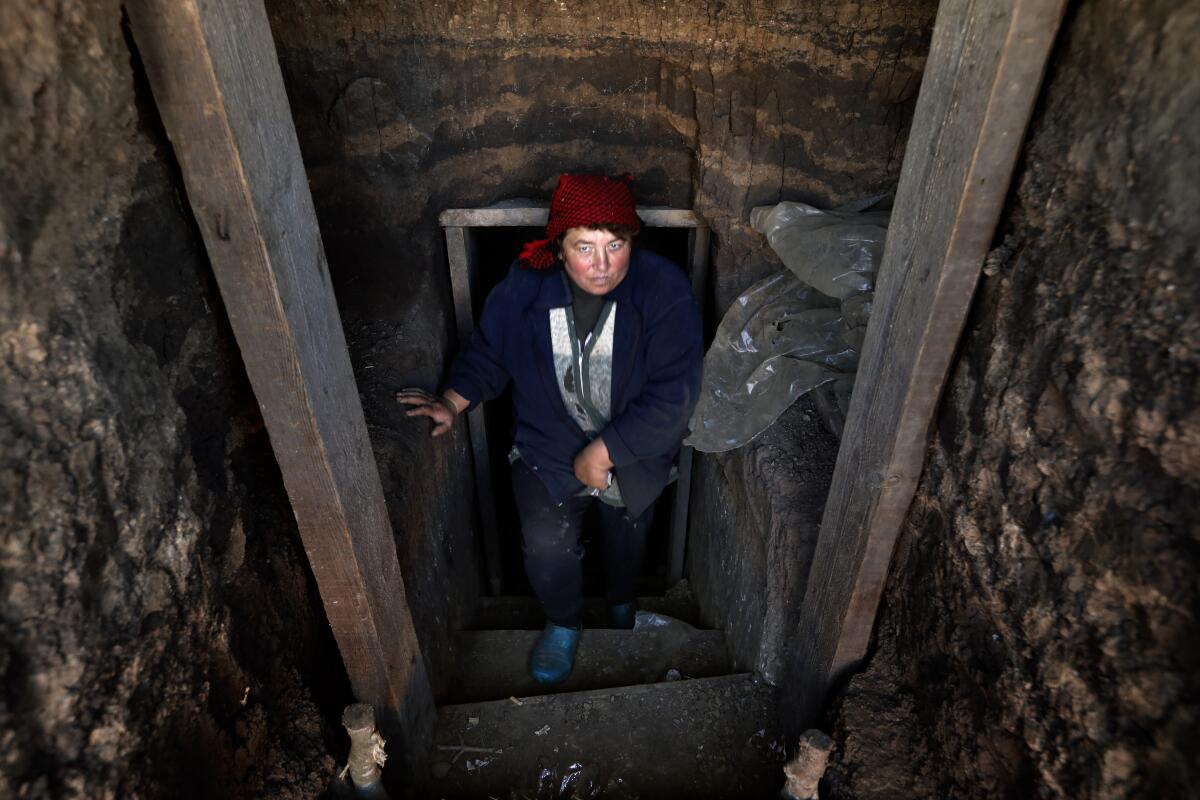
“This war has knocked on the door of each and every Ukrainian home,” Iryna Maruniak, who oversees utility issues for the municipality of Lviv, western Ukraine’s biggest city, said last week, citing power cuts that have left millions of households across the country dark and cold.
In cities, towns and villages, authorities are setting up thousands of insulated tents known as “invincibility points” where people can warm themselves, drink hot tea and charge their phones and other devices. In urban high-rise housing blocks, residents band together to leave care packages in elevators — water, diapers, snacks — for anyone caught by an unexpected outage.
Ukraine expects the punishing onslaught to continue.
The Times’ Carolyn Cole is on the ground in Ukraine as residents prepare for winter’s cold amid Russian missile strikes against the nation’s infrastructure.
“As long as they have missiles, they won’t stop, unfortunately,” Ukrainian President Volodymyr Zelensky said in a video address this week.
Acknowledging what has become the dual-front nature of the war — the military’s need for sophisticated armaments, both offensive and defensive, and the burgeoning needs of an electricity-starved populace — Ukraine’s defense minister, Dmytro Kuleba, succinctly summed up his country’s wish list.
“Patriots and transformers,” he told reporters on the sidelines of this week’s North Atlantic Treaty Organization summit in Romania, referring to sophisticated missile-defense systems and devices that transfer energy from one electrical circuit to another, which are in short supply as urgent power-grid repairs continue around the clock.
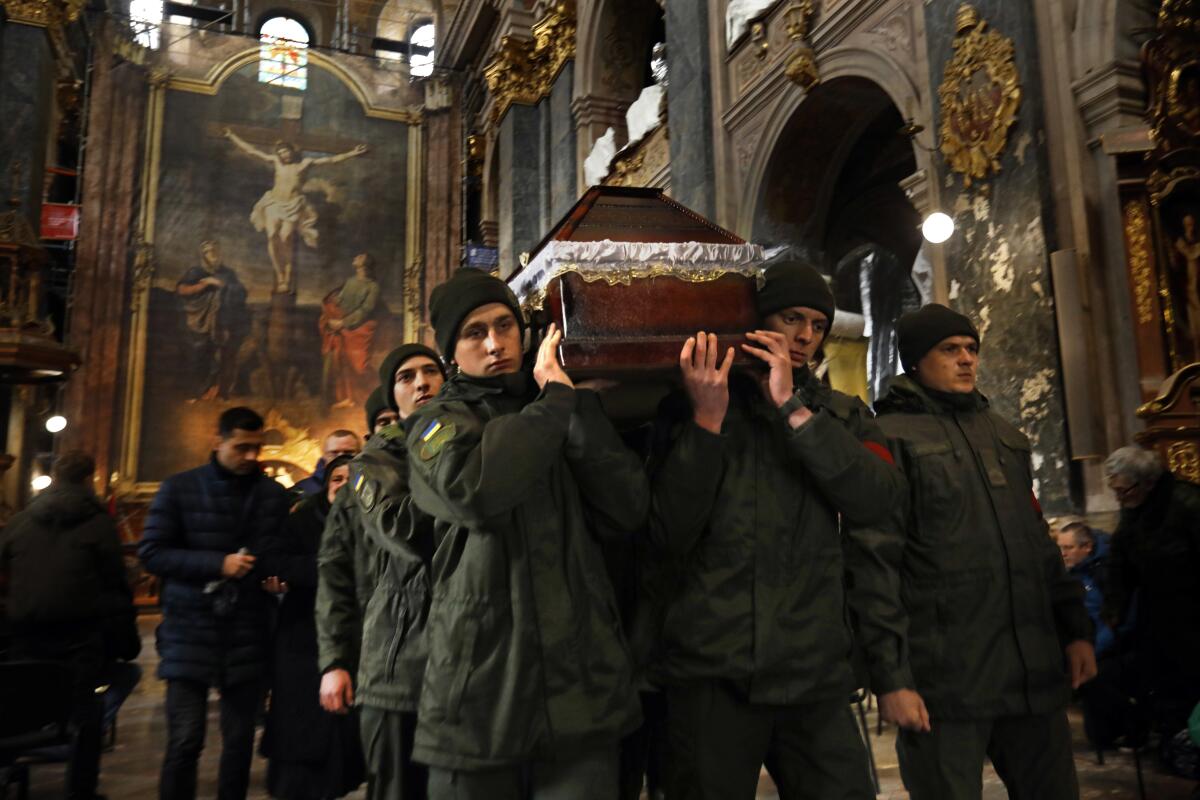
U.S. and NATO officials this week seemed to be addressing that wish list. As a supplement to the nearly $40 billion in weapons and military equipment the West is shipping to Ukraine, the U.S. announced a $53-million package of “energy aid,” including the crucial transformers as well as generators and spare parts for electrical systems.
“That’s going to get to Ukraine not in a matter of months, but in a matter of days or weeks,” U.S. Secretary of State Antony J. Blinken said Wednesday at the Romania conference. He acknowledged, however, that the U.S. will have to make a shift in the type of weapons it’s providing to include more sophisticated air-defense systems.
Otherwise, Blinken said, Ukraine and its backers face “a process that keeps repeating itself. Stuff gets replaced; it gets destroyed; it gets replaced again.” He termed Russia’s campaign to “freeze and starve” the people of Ukraine “barbaric.”
In Washington, a senior Defense Department official said the Pentagon is considering adding long-range Patriot surface-to-air missile systems to a future tranche of military aid to Ukraine.
Ukraine’s “needs have changed over time as the war has evolved,” John F. Kirby, spokesman for the White House National Security Council, said Wednesday. “In the beginning we were talking about [shorter-range] Stingers and Javelin missiles, and now we are at a point with these attacks on civilian infrastructure that air defense is a prime need. ... We are prioritizing air-defense capabilities.”
Both on and off the battlefield, Ukraine is doing everything it can to counter the narrative — which has gained traction among some Western allies — that the conflict is at a military impasse from which the only exit is negotiation.
Zelensky’s government is walking a difficult line, needing to appear to be open to an eventual negotiated settlement, but also wanting to embark on any talks at a moment of maximum military advantages, which Ukraine does not believe it has yet achieved.
After Ukraine’s recent gains in the south, the United States’ highest-ranking military official, Gen. Mark A. Milley, chairman of the Joint Chiefs of Staff, suggested Kyiv should negotiate a settlement sooner rather than later, and before fighting reached a stalemate. President Biden and other senior U.S. officials swiftly pushed back on the idea.
French President Emmanuel Macron, in Washington this week on a state visit, raised the possible strategy with Biden, according to European diplomats, but ultimately chose to back the U.S. position. “We will never urge the Ukrainians to make a compromise which will not be acceptable for them,” he said at a news conference with Biden on Thursday.
“If we want a sustainable peace,” he added, “we have to respect the Ukrainians to decide the moment and the conditions in which they will negotiate about their territory and their future.”
Zelensky has said he will negotiate only with the “next” president of Russia — that is to say, after Vladimir Putin is ousted.
Despite harsh weather conditions in the field, or perhaps because of them, Western analysts and officials believe Ukrainian commanders will keep pushing during the cold-weather months to recapture more territory controlled by Russia, amounting to about one-fifth of the country. Some of those lands were seized during what Ukrainians consider the real start of this conflict, a separatist proxy war in Ukraine’s east that Russia fomented beginning in 2014.
Yet more territory was lost after Putin launched a full-scale invasion Feb. 24. Of the latter lands, Ukraine has recaptured about half.

Ukraine wants to build on military successes that came both early and recent. In April, its forces repelled Russia’s attempt to seize the capital, Kyiv. In September, Ukrainian forces retook thousands of square miles in the northeastern province of Kharkiv. Last month, Russian troops, cut off from their own supply lines, were forced to abandon the strategic city of Kherson, the only provincial capital they had managed to capture since February.
Better-equipped and more disciplined Ukrainian forces will probably stand up well against ill-trained, poorly supplied Russian troops who quickly found themselves thrust onto the front lines after being mobilized, Western military assessments suggest.
In a winter preview, British military intelligence said last month that “changes to daylight hours, temperature, and weather will present unique challenges” for both sides. The assessment said, though, that NATO-standard cold-weather gear provided to Ukrainian forces would help protect against hypothermia.
Autumn rain, and resulting thick mud, has slowed the pace of battle, but freezing ground later in winter will again allow freer movement of heavy equipment — one reason Putin waited until February to invade.
But the forecast is brutal in places such as Bakhmut, an eastern city that has been a vortex of carnage unleashed by Russian forces, including mercenaries from the notorious private Wagner group. The devastated landscape, riddled with tree stumps and water-filled shell holes, hauntingly evokes scenes of trench warfare in World War I.
In the south, the Black Sea coast may now be a crucial springboard for Ukrainian forces. For months, Ukraine successfully defended the city of Mykolaiv, though deadly, near-constant missile attacks ravaged parts of it.
The city of Kherson, now freed from an eight-month Russian occupation, has been under fierce Russian shelling from across the Dnieper River, where Moscow’s forces have been fortifying their defenses in anticipation of a renewed Ukrainian push.
For Ukraine, even victories are clouded by suffering. Last month, authorities began evacuating civilians from recently recaptured areas of Kherson and Mykolaiv provinces, foreseeing that winter conditions will simply be too difficult due to lack of heat, power and water.
Neither side gives a public accounting of its dead and wounded, although Western estimates suggest casualties on both sides number in the many tens of thousands. Ukraine’s military said that, by its reckoning, 500 Russian soldiers were killed in one 24-hour period this week.
And every day across the country, intimate scenes of grief dot the conflict’s vast canvas.
In a war in which not only the young but the middle-aged go off to fight, Yuriy Chernenko — killed on the eastern front two days before what would have been his 54th birthday — was mourned by classmates in Lviv, who remembered their kindergarten days together nearly half a century earlier.
“He was so happy to be a grandfather; it brought him such joy,” said Iryna Krupchak, 53, who joined the solemn procession behind Chernenko’s coffin. “I curse those who stole his life from him.”
King reported from Mykolaiv and Wilkinson from Washington.
More to Read
Sign up for Essential California
The most important California stories and recommendations in your inbox every morning.
You may occasionally receive promotional content from the Los Angeles Times.
